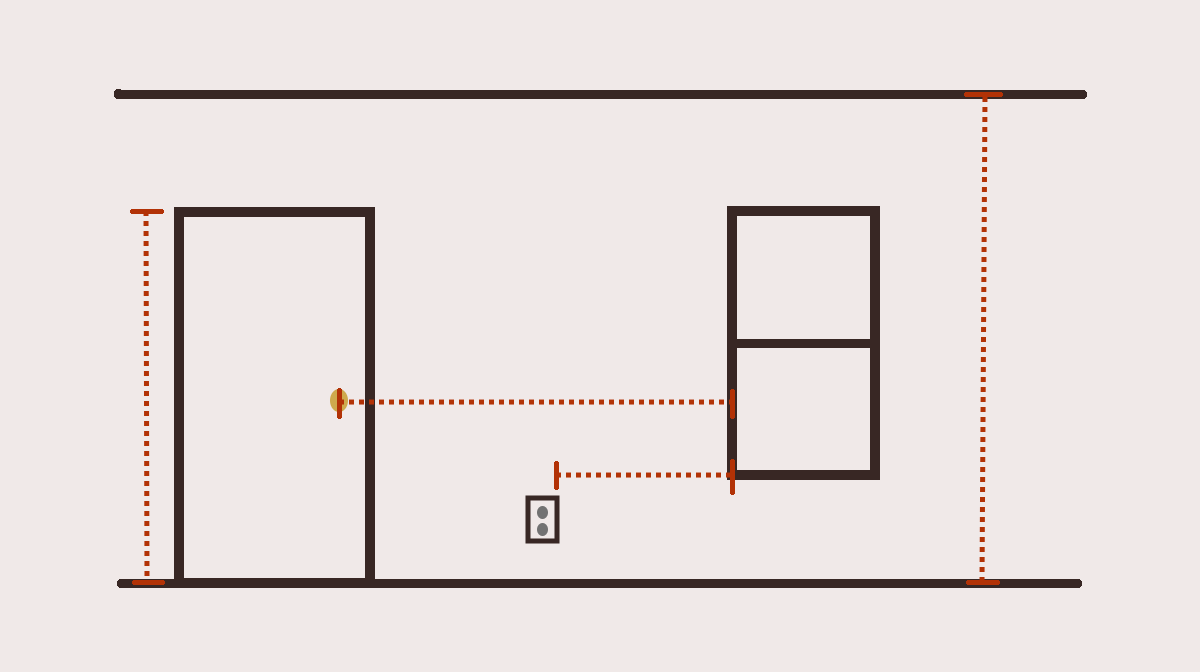People who are feeling some sort of extreme emotion generally do not make good financial decisions. This is why you shouldn't go grocery shopping on an empty stomach. It's why the worst types of lawyers chase ambulances. It's why stores like invest huge sums of money into detecting when their customers are going through major life changes like the birth of a child, a graduation or a retirement.
Choosing a place to live is a decision that is often emotionally loaded as it is, and techniques used by real estate agents to market a property are designed to dampen any logical thought processes you may bring to the table. But housing is a huge financial investment. The choice of housing should not just be based on emotion but with logical thought towards your safety, your comfort and your bank account.
Even if you're normally an emotional decision maker, you need to make sure that when you view an apartment that you are looking with your head as well as your heart. Today's apartment viewing technique for renters will reset your emotions for every apartment showing. It will ensure that you are approaching every showing with the same amount of thought and clarity no matter how your day has been or who is with you.
All it takes is a measuring tape and seven measurements. Of course, these measurements will give you some nice numbers, but the process of actually pausing to reel out the tape will lead you to think about some important details that you should be noticing beyond feet and inches. You could use other metrics instead, but I've found that a measuring tape is a cheap, portable, and neutral way to show an agent that you're serious about the task at hand while not seeming hostile.
Here's what to measure.
1. Freight elevator or Stairs
Why? It makes you think about getting in and out. A common reason why people get off to a bad start at their new apartment is the sheer horror of moving in. Carrying all your stuff in and out is hard enough without any of it getting stuck in the stairs or the freight elevator.
But apartment building traffic routes are not just a "moving in" kind of thing. They're something you will deal with every time you leave, every time you come home, every time you walk the dog, head to the laundry room or bring in the groceries. It's also something that you'll definitely encounter in case of a fire. Lobbies may be pretty but once you move in you'll probably come and go through the back door quite often. Might as well see what that back route looks like.
Measure this: If the building has an elevator, get the width of the doors. If not, go to a corner of the stairs and measure the shortest distance from wall to wall (or floor to ceiling).
2. Depth of the kitchen sink
Why? It makes you think about practical daily tasks. Of course it will tell you if you'll be able to fit a cooking pot in the sink to fill it. But it may also lead you to think about where the local grocery store is and what it would be like to cook a meal in the kitchen. It will probably lead you to test the water pressure while you're at it. It may also get you thinking about whether there's a practical place in the apartment to bathe a baby, dye your hair, or perform other semi-regular tasks involving water and sinks.
Measure this: The distance from the bottom of the sink to the bottom of the faucet. Compare with the height of your tallest cooking pot.
3. Window to outlet
Why? It makes you think about the moving parts that come with the apartment... and the ones that don't. The distance from window to an outlet makes you think about air conditioning, which in turn should lead you to think about heat. It will also force you to look at the outlets themselves. Are they grounded? Are there enough of them? Are they too far apart? While you're at it, how about those windows? Do they open? Are they clean? Are they cracked or full of water vapor? Are there screens? Are they blocked with ivy? Are there blinds? How many windows can you clearly see into when looking out? Remember, if you can see them, they can see you.
Measure this: Either the distance between a bedroom window and the nearest outlet, or if the place has central AC, you can instead measure the distance between two outlets in either a bedroom or the living room.
4. Bedroom with doors open
Why? This one is about practical living and privacy. Modern apartments tend to have big bedrooms but vintage apartments often have very small ones. No matter the age of the building, bedroom setups may not be practical for actually fitting your bed in there. I've seen any number of apartments where you might be able to fit a queen bed in the room but you wouldn't have enough room remaining for the door to swing open and shut. Doing this may also lead you to think about whether or not all the bedroom doors close securely.
Measure this: Open all the doors in the bedroom so they are sticking straight out from the walls, and then measure the width and depth of the remaining space.
5. Window to doorknob (or window to ground)
Why? This one is clearly about security. Sometimes you need to think like a thief in order to defend yourself against thieves. All the deadbolts in the world won't do any good if someone can just break a window and reach through to unlock them.
Measure this: If you're on the 2nd floor or higher, measure the distance from the front doorknob and the back doorknob to the nearest windows that can be broken from the outside. If you're on the first floor, measure the distance from the ground to the lowest window.
6. Floor to ceiling
Why? It makes you look up. Seriously, people always forget to look up, and they need to look up. You need to look at the ceilings because that's where water leaks come from. In places with central heat it also is often where the heating vents are, and those can be spewing a bunch of black goop across the ceiling - never a good sign.
Measure this: Ideally, the height of each room. If you're in a hurry, you can just do the bathroom and the kitchen since that's where interior leaks most often happen.
7. A closet.
Why? It makes you think about storage. It's very tough to keep an apartment tidy without adequate storage space. You can have the biggest rooms ever seen, but they'll feel a lot smaller if you have to add in a bunch of cabinets to hide all your belongings. Where will you store food? How about coats and boots? Off-season clothing? Linens? Cleaning supplies? The cat's litter box?
Measure this: The width and depth of one closet. You can, of course, measure more of them if you like.
There you have it. Seven measurements that will help keep your emotions in check and ensure that your next apartment is as practical as it is pretty.
If you try this technique on your next showing tour, please let us know in the comments and tell us how it worked for you!
RentConfident is a Chicago startup that provides renters with the in-depth information they need to choose safe apartments. Help us reach more renters! Like, Share and Retweet us!


